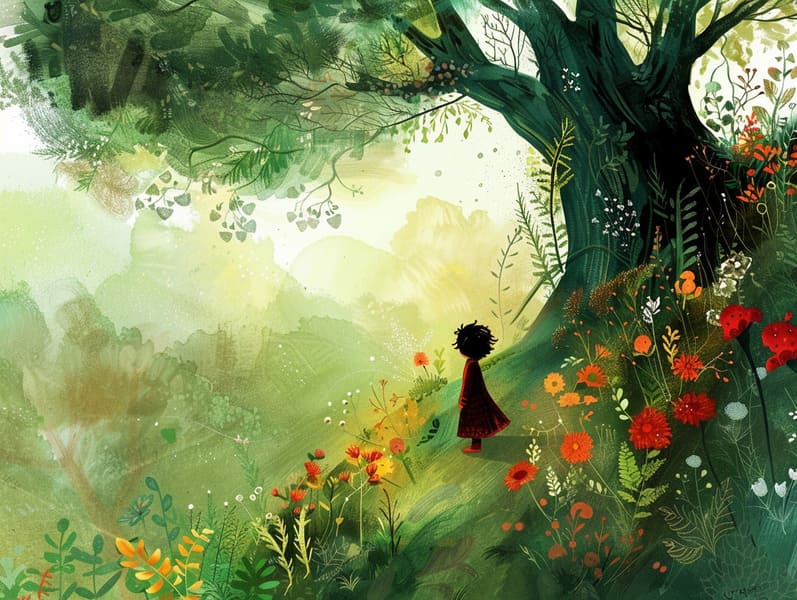Exploring the Roots of Bedtime Fairy Tales and the Undying Elegance.
Exploring the Roots of Bedtime Fairy Tales and the Undying Elegance.
Blog Article

Children's fairy tales have deep roots. These narratives have been passed down from one generation to the next millennia before they were ever recorded. They sprang from a variety of backgrounds, including European traditions. They were initially disseminated among elders, often carrying themes and messages related to the societal norms and beliefs of the time.
The renowned Brothers Grimm, Jacob and Wilhelm, were among the first to assemble many of these beloved narratives. Their collection, "Grimm's Fairy Stories," included tales like "Cinderella," "The Bread Crumb Trail," and "Schneewittchen," which have since become hallmarks in the world of iconic fairy tales. Similarly, Hans Christian Andersen's imaginative stories, such as "The Sea Maid," and "The Story of the Ugly Duckling," have captured hearts worldwide, establishing their place in the pantheon of classic fairy tales.
Though they are old, these stories remain as pertinent as ever, especially as kids' bedtime tales. These enchanting tales are now available in multiple formats, including colorful picture books, magical animations, and online fairy tales.
Their unwavering allure can be linked to several magical reasons:
Life Lessons: Traditional fairy tales often illustrate important moral lessons. Fairy tales like "The Shepherd Boy and the Wolf" teach the benefit of truthfulness, while "The Tale of the Tortoise and the Hare" demonstrate the benefits of determination and unpretentiousness. These stories offer young readers clear distinctions between truth and falsehood, forming their moral compass in a kind yet important way.
Compassion and Knowledge: Classic fairy tales frequently feature heroes facing problems and hurdles, provoking young readers to feel with their struggles and celebrate their triumphs. For instance, "The Story of Beauty and the Beast" emphasizes the benefit of looking deeper to comprehend the true being of a character, nurturing compassion and recognition.
Cultural Comprehension: Many ancient fairy tales are infused with the cultural contexts from which they grew. Discovering these fairy tales can provide informative snapshots into different beliefs, strengthening a sense of world awareness and discernment.
Fantasy and Imagination: The fantasy-filled elements in timeless fairy tales—magical kingdoms—engender children’s creative thoughts. These tales transport readers to enchanted realms, stimulating fantasy dreams and a sense of amazement that endures a lifetime.
Old fairy tales are not only entrancing but also edifying. They function as mesmerizing tools in cultivating various cognitive and affective skills in little ones. When fairy tales are spoken, they boost linguistic abilities by bringing new terms and sophisticated sentence structures. This practice also strengthens listening abilities and concentration, as kids keep up with the story, expectant to see what happens next.
Furthermore, examining the themes and characters of classic fairy tales can strengthen cognitive skills and reasoning skills. Young ones are instructed to recognize patterns, predict happenings, and comprehend cause and effect. These examinations also facilitate young readers utter their thoughts and feelings, boosting their emotional intelligence.
In today’s cyber age, the proliferation of digital storybooks has made these fairy tales more reachable than ever. Digital sites and online apps make available huge assortments of ancient fairy tales that can be read or listened on anytime, anywhere. Fairy tales read aloud are particularly sought after, supplying an interactive method for children to relish these spellbinding stories. Audiobooks and read-aloud videos carry characters and settings to life, often supported by captivating harmonies and musical scores that improve the narrative adventure.
The unending appeal of old fairy tales lies in their ability to evolve to contemporary times while staying true to their fundamental ideas. Contemporary versions of these narratives often introduce more representative figures and modern settings, making them pertinent to today’s audience. However, the central morals of boldness, sympathy, and justness remain unchanged, continuing to appeal to young readers of all ages.
Fairy tales also offer a sense of warmth and recognition. They highlight a well-structured narrative with a distinct beginning, middle, and end, often concluding with the settlement of conflicts and the triumph of morality over immorality. This uniformity can be consoling for little ones, allowing a sense of consistency in an ever-changing world.
Ancient fairy tales continue to delight and teach new generations, maintaining their attraction and importance in modern society. As children's night stories, they afford a perfect blend of delight and instruction, developing moral values, empathy, and creativity. The proliferation of online fairy tales and the likability of fairy tales told out loud validate that these timeless stories remain acquirable to new generations.
By retaining and imparting these stories, we continue to praise the rich tapestry of fantasy and cultural heritage. Whether you are browsing a colorful picture book, experiencing a web-based library, or listening to an audiobook, the majesty of ancient fairy tales is always within reach. These tales teach us of the invariable nature of fairy tales and its ability to connect us across time and space.
Whether you are seeing a artistically illustrated book, browsing a electronic library, or listening to an audiobook, the grace of children's fairy tales is always within reach.
These tales show website us of the unwavering effect of stories and its ability to draw us together across eras and regions, establishing a link that enchants and educates alike.